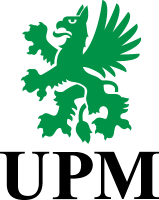
Introduction
A process plant shutdown, also referred to as a turnaround, is a planned break in production during which maintenance, inspection, and repair activities are carried out on equipment, systems, and structures.
These events are critical to the safe and efficient operation of the plant, ensuring optimal performance, extending equipment life, and maintaining regulatory compliance.
One of the main challenges during shutdowns is managing the health and safety of maintenance workers who are exposed to various hazards. In this context, the implementation of work packs can significantly reduce the risk of injury to maintenance workers.
This article will discuss the benefits of work packs in mitigating risks during process plant shutdowns and turnarounds.
Work Pack Definition and Components
A work pack is a comprehensive set of documents that detail the scope of work, procedures, safety measures, and required resources for a specific maintenance task or project. The contents of a work pack typically include:
- Work scope and job description: A clear and concise outline of the task, its objectives, and the expected outcomes.
- Risk assessments and hazard analysis: Identification of potential hazards associated with the task, followed by an evaluation of their likelihood and severity.
- Safety instructions and precautions: A list of safety measures and precautions to be taken to mitigate identified risks and hazards.
- Work procedures and method statements: Step-by-step instructions on how to perform the task, incorporating safety measures and best practices.
- Personnel qualifications and training requirements: A description of the required skills, qualifications, and training for personnel involved in the task.
- Tools, equipment, and materials: An inventory of the necessary tools, equipment, and materials, along with safety and usage guidelines.
- Inspection and quality control: A plan for inspecting and verifying the quality of the work performed.
- Inspection and quality control: A plan for inspecting and verifying the quality of the work performed, including checklists, inspection criteria, and documentation requirements.
- Schedule and resource allocation: A detailed timeline for completing the task, including resource allocation, crew assignments, and contingencies for potential delays.
- Communication and coordination: A plan for effective communication and coordination among team members, supervisors, and stakeholders to ensure smooth execution of the task.
Benefits of Work Packs in Reducing Risk of Injury to Maintenance Workers
- Enhanced hazard awareness: Work packs provide a systematic approach to identifying and analysing hazards associated with maintenance tasks. This heightened awareness allows for the implementation of appropriate risk mitigation measures, reducing the likelihood of injuries.
- Standardized procedures: The step-by-step work procedures and method statements included in work packs promote consistency and adherence to best practices. This standardization reduces the potential for human error, miscommunication, and accidents during the maintenance process.
- Improved safety culture: The comprehensive safety instructions and precautions in work packs emphasize the importance of safety in every aspect of the task. This focus on safety fosters a strong safety culture among maintenance workers, encouraging them to prioritize their well-being and that of their colleagues.
- Adequate personnel training: Work packs outline the required skills, qualifications, and training for personnel involved in the maintenance tasks. This ensures that workers are well-equipped with the necessary knowledge and skills to perform their tasks safely and efficiently.
- Effective resource management: Work packs provide a clear inventory of the necessary tools, equipment, and materials for each task, along with safety and usage guidelines. This not only ensures that the right resources are available when needed but also that they are used correctly and safely.
- Quality control and inspection: The inspection and quality control plan in a work pack helps ensure that maintenance work meets the required standards and that potential issues are detected and addressed promptly.
Conclusion
In conclusion, work packs play a crucial role in reducing the risk of injury to maintenance workers during process plant shutdowns and turnarounds.
By providing a systematic approach to hazard identification, risk assessment, and mitigation, work packs enhance the overall safety culture within the organization.
Through standardized procedures, adequate personnel training, effective resource management, and strict quality control measures, work packs ensure that maintenance tasks are executed safely, efficiently, and in compliance with best practices.
Ultimately, the implementation of well-planned work packs, contributes to a safer working environment for maintenance workers, leading to a reduction in accidents and injuries, improved operational efficiency, and a more resilient process plant operation.



































